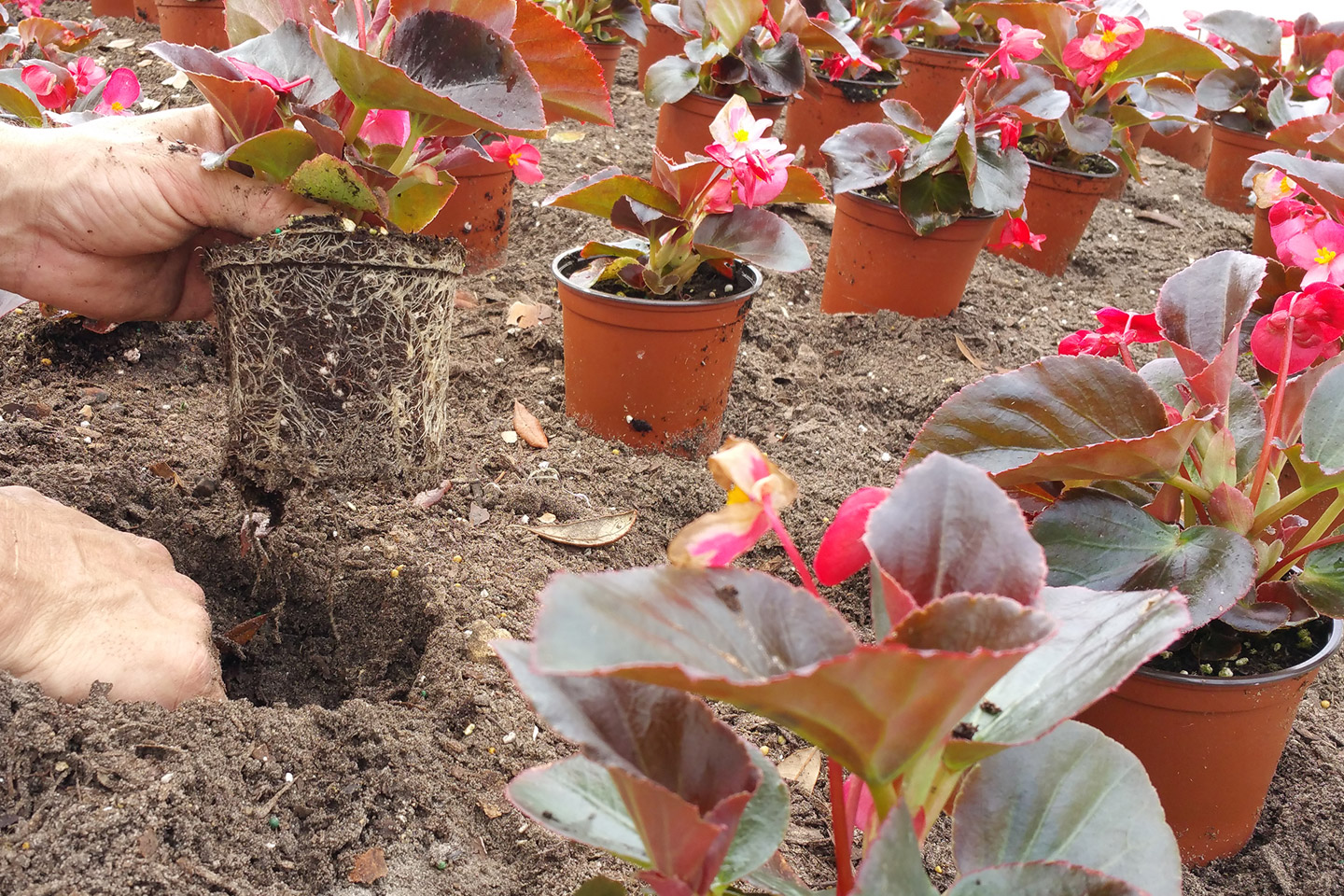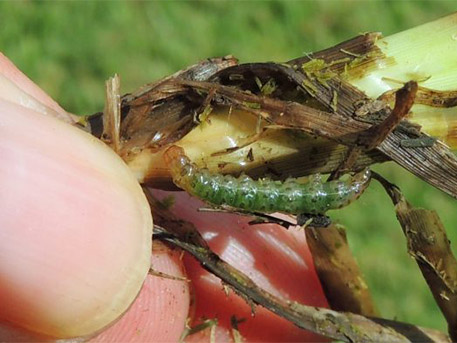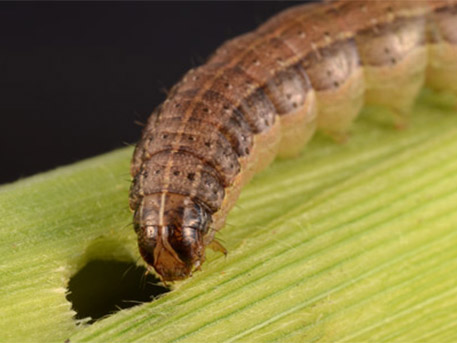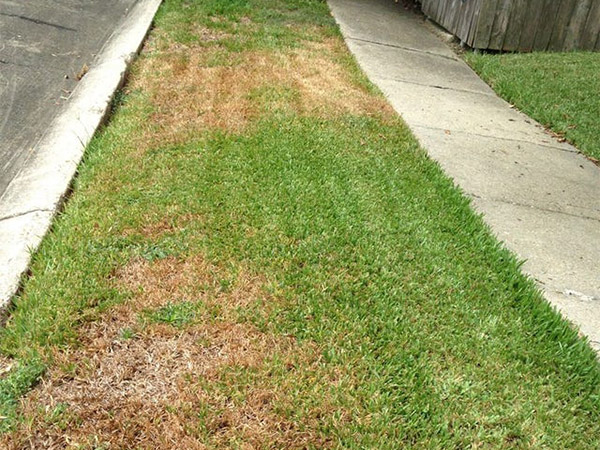What's Damaging Your Landscape? Part 1: Turf Grass Pests - Sit Down with CEPRA
Our lawns are a great symbol of pride in our communities. The amount of time, effort, and money we put into its care has evolved into a $93 billion industry, employing more than one million people nationwide. It is a continuous challenge for landscape teams to keep a sharp eye out for pests and their potential to damage our landscapes. With how much we value our lawns, it pays to be alert when it comes to handling a pest situation.
Of the insects that are present in our environment, most are not considered pests. Rather, they provide us with the essential services of being a pollinator, a beneficial predator, or a parasite of pest insects. Insects perform the important tasks of aerating soil and breaking down dead materials, and their role as pollinators ensure the success of crops that feed both people and animals alike. However, it is that small percentage pests that do cause injury to humans, crops, landscapes, and structures that need to properly managed. The following is a list of the most common turf grass pests that are found in landscapes across Florida:
Turf Grass Pests
The first crucial step in pest management is the ability to identify the pest - either through a physical description, the type of damage the pest is causing to your lawn, or by what grass species the pest is affecting. Most of our lawns can be affected by either surface feeders that damage the foliage, or subsurface feeders that damage the root system of turf grass.
Turf Grass Surface Feeders
Tropical Sod Web Worm - This insect prefers St. Augustine grass, but will also feed on Bermuda and Zoysia grass. They are most active from Spring to Fall. The larval stage is the most damaging stage of the tropical sod web worm's life. Mature caterpillars are 3/4 to 1 inch long and grayish-green. Damage symptoms range from the notched appearance to the loss of leaf blade height. The caterpillars feed at night and rest in the thatch layer of the turfgrass during the day. In days, this pest can cause significant damage from which it takes the turf months to recover.
Fall Army Worms - Despite their name, fall armyworms can cause damage to all warm-season turfgrasses year-round, with bermudagrass being the most common host. Armyworms are green-to-brown colored caterpillars when young, and reach a dark brown as they mature. They grow up to 1.5 inches long and have a dark head marked with a light-colored inverted Y. Damage from fall armyworms is uniform across a large area and appears as bare spots in a lawn. When the larvae are very numerous, they can defoliate the turfgrass, consuming nearly all vegetation in their path. While they are active at all hours, they do most of their feeding in the early morning and late evening. Fall armyworms tend to be more of a problem on newly established turf - especially if the turf was heavily fertilized in late summer.
Southern Chinch Bug - This is the most devastating insect pest of St. Augustine turfgrass. You can often find Chinch bugs by parting the St. Augustine at the edge of affected areas and by examining the soil at the base of the turf. Recently hatched nymphs are wingless, yellow or pinkish-red with a light-colored band across their abdomen. After each molt, the nymphs more closely resemble the adults. They have black bodies with white wings, each of which bears a distinctive, triangular black mark measuring 1/6 to 1/5 of an inch long. The turf grass damage is from the chinch bugs' saliva, which causes phytotoxic effects that inhibits water movement within the grass blades. Chinch bugs can inflict significant damage during the summer months, when the heat is on and the turf is most likely to be drought stressed. The affected turf grass areas appear as rust to brown colored patches.
Subsurface Feeders
Mole Crickets - Mole crickets are most often thought of as the pests of grasses, affecting a wide range including Bahia grass, Bermuda grass, Centipede grass, Seashore Paspalum, St. Augustine grass, and Zoysia grass. There are three non-native species of mole crickets that are considered pests in Florida. They are active year-round, but do most of the damage during March through June or late August to early October when they reach the adult stage of their life cycle. Mole crickets fly at dusk for 1-2 hours and burrow into moist soil nearby lights to mate and lay eggs. Adult mole crickets are light yellowish to dark brownish and measure 22–33 mm in length and have enlarged forelegs for digging. Mole cricket feeding and tunneling can damage or kill the turfgrass in areas where the nymphs are rapidly developing. Their tunneling is known to dislodge turf, drying them out. This causes an overall decline, dead patches, and injury to the root system of the affected turf grass.
Grubs - Most warm season turfgrasses are affected by grubs, which comes from a variety of beetle species. Due to the amount of different species available, grubs can be active in the soil throughout the year, yet most grub-afflicted areas are observed late-summer into early-fall. They are white in color and grow to be 1 3/4 inches. They feed on grass roots, causing the turf to thin, yellow, and die. The damage is often observed as being spongy, scattered, brown patches that increase in size over time. Mild damage may make the turf yellow, which could be misdiagnosed as a nutrient deficiency or disease. Severe injury results in large areas of dead turf due to the damaged roots. In many cases you may be able to lift back dead patches of turf grass like a carpet where grubs have been feeding. Heavy infestations of grubs attract animals and birds, which causes additional damage to the turf grass.
Turfgrass pests can quickly turn a beautiful community into a barren field. There is comfort in knowing that most of the damage found in our landscapes is committed by a few, easy-to-remember pests. It is important to be aware of the signs and alert your landscape professionals of any concerns you come across. The sooner they are addressed, the better the quality of your landscape. You can find a quick guide of this section on turfgrass pests available for download below.
We hope you have enjoyed our segment on common pests in the Florida landscape. Please join us for the next segment of our four-part series, where we will be highlighting common tree pests.
Part 1: Turf Grass Pests | Part 2: Tree Pests | Part 3: Palm Pests | Part 4: Ornamental Shrub Pests









